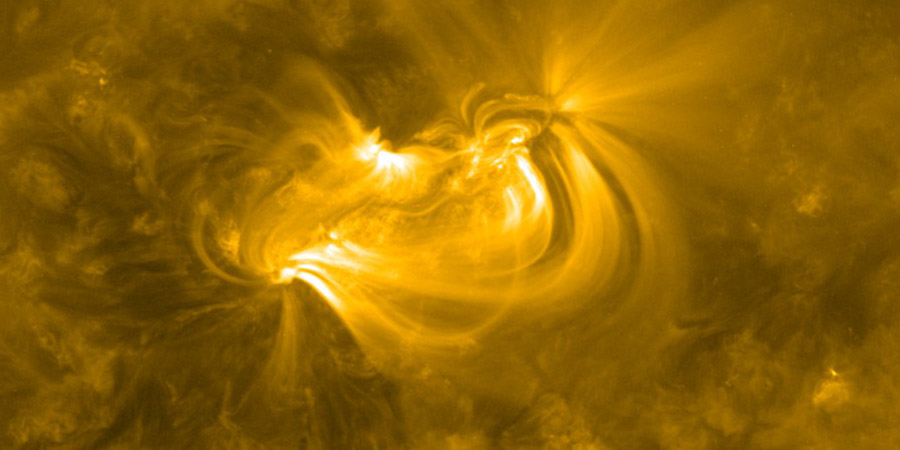C3 solar flare with earth-directed CME
Thursday, 22 April 2021 17:23 UTC

Sunspot region 2816 produced a long duration C3.9 solar flare which was associated with both Type II and IV radio sweeps. The solar flare peaked at 04:35 UTC and launched a coronal mass ejection into space.
2816 produced a C3 solar flare (with Type II and IV sweeps) at 04:35 UTC. A faint partial halo CME can be seen leaving the Sun on SOHO. The plasma cloud likely has an earth-directed component that could arrive late on Sunday, 25 April. Major storm activity is however unlikely. pic.twitter.com/60svLUbjBf
— SpaceWeatherLive (@_SpaceWeather_) April 22, 2021
A faint and fairly slow partial halo coronal mass ejection (CME) can be seen leaving the Sun as we can see in the tweet above courtesy of SOHO. We see a fairly wide partial halo coronal mass ejection. The bulk of the cloud seems to be heading east/south-east but there is likely an earth-directed component that could arrive late on Sunday, 25 April. The NOAA SWPC has yet to publish a prediction for this event but considering the slow speed and faint halo signature, we do not expect much geomagnetic activity once the plasma cloud passes our planet. Active geomagnetic conditions (Kp4) are likely with a chance of minor G1 geomagnetic storm conditions under optimal conditions. Sunspot region 2816 has been decaying slightly but there remains some magnetic mixing among the leading sunspots. More C-class activity is possible but M-class activity is not likely at this time.
Sunspot region 2817
The C3 solar flare from sunspot region 2816 is of course today's space weather highlight but departing sunspot region 2817 is really doing its best to grab our attention. While on the limb, it has been actively producing C-class solar flares. At the time of writing it has been responsible for 8 C-class solar flares but none of them seems to have been eruptive. An interesting development but a shame this region will soon transit the far side.
Thank you for reading this article! Did you have any trouble with the technical terms used in this article? Our help section is the place to be where you can find in-depth articles, a FAQ and a list with common abbreviations. Still puzzled? Just post on our forum where we will help you the best we can!
Latest news
Latest forum messages
More topicsSupport SpaceWeatherLive.com!
A lot of people come to SpaceWeatherLive to follow the Sun's activity or if there is aurora to be seen, but with more traffic comes higher server costs. Consider a donation if you enjoy SpaceWeatherLive so we can keep the website online!

Space weather facts
| Last X-flare | 2025/05/13 | X1.1 |
| Last M-flare | 2025/05/14 | M1.2 |
| Last geomagnetic storm | 2025/05/03 | Kp5 (G1) |
| Spotless days | |
|---|---|
| Last spotless day | 2022/06/08 |
| Monthly mean Sunspot Number | |
|---|---|
| April 2025 | 140.6 +6.4 |
| May 2025 | 74.9 -65.7 |
| Last 30 days | 99.8 -31.1 |


